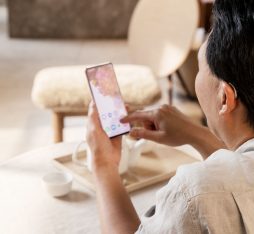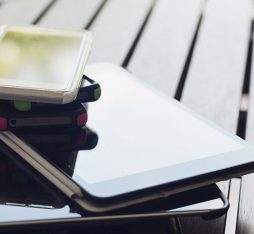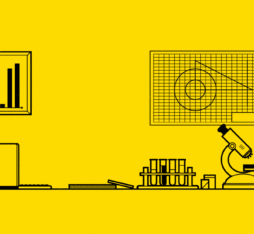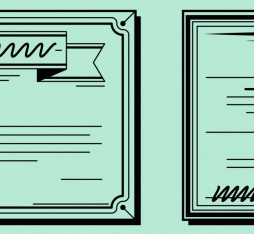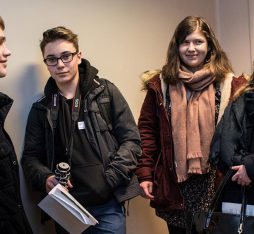During a regatta, a good crew needs to function as a team, be responsive and make the right decisions at the right time. There is a high price for every mistake, hesitation and misunderstanding. But a healthy team spirit can work wonders. A crew of five hearing people and three deaf signers took part in the Armor Cup, an annual sailing competition for Orange Group employees. Their boat, one of 37 to take part in the event held in Quiberon Bay from June 16–18, 2023, was named Signs@Work after the collaborative professional FSL (French Sign Language) dictionary developed by Orange. The app enabled the eight crew members to communicate so they could sail the boat effectively. “I took part in the Armor Cup for at least two reasons: It was a chance to see how Signs@Work performed in a sailing environment, but also it was an adventure on a sporting and a human level, a challenge to overcome,” said Nicolas Courte, Software Engineer and main developer of the Signs@Work iOS app. “We didn’t win the race, but that doesn’t matter. Sure, we were motivated by the spirit of competition and we wanted to win the regatta, but victory for us was about the hearing and deaf-signing crew members being able to communicate with each other using signs, which is truly innovative.”

Signs@Work is a collaborative dictionary. Users, in this case Orange employees, can submit new signs to the platform.
Collaborative Dictionary
Developed to facilitate communication with deaf-signing Orange Group employees, thereby encouraging their participation in meetings and work-related discussions, Signs@Work is a unique tool. “FSL is a very rich language. But for technical terms, such as gateway, cloud, AI, firewall, 5G and WhatsApp, we have to rely on neologisms, a bit like with Franglais,” explained Denis Chêne, Researcher in human-computer interaction and Head of the Employee Accessibility Innovation research program at Orange. “Signs@Work is a collaborative dictionary. Users, in this case Orange employees, can submit new signs to the platform. Others then vote on them or offer alternatives, etc.” Another difference compared with a traditional FSL dictionary is that the new signs are captured on video, using either a webcam or a smartphone. It makes it easy for users to share work-related signs. Developed in open source as part of OSAi (the Open Source Accessibility initiative), Signs@Work also won a prize in the Inclusion category at the 2021 Les Cas d’OR du Digital Responsable (responsible digital) awards.
Specific Vocabulary
Due to its iterative design, Signs@Work evolves as it is used. Originally designed as a repository for workplace telecoms and digital terms, the dictionary could be used in other very niche areas, such as the nautical world, whose occasionally specific vocabulary had not previously been translated into FSL. “There is no margin for error when you’re sailing a boat, particularly in race conditions. Coordination is essential; everything must be accurate to the millimeter. So we needed to invent and then improve specific signs, based on lived experience,” said Denis Chêne. We had built up quite a lot of nautical vocabulary before the Armor Cup regatta, such as the sign for the boom, which is the long pole under the mainsail and attached to the mast. The sign for it requires two hands. But on the boat, there are certain situations where you need both your hands. So we needed to adapt the sign for use on a single hand, with the index finger designating the mast and the thumb the boom.” Another example is tightening or loosening the sheets, which are used to control the sails. In theory, the two signs are almost identical — a forward or backward movement of a closed fist. But in practice, out on the boat, it was impossible to differentiate them so we very quickly needed an alternative. For loosening, we ended the sign with an open hand, whereas the fist remained clenched for tightening. All these new signs will soon be sent to the French Sailing Federation, which does not currently have an FSL dictionary.

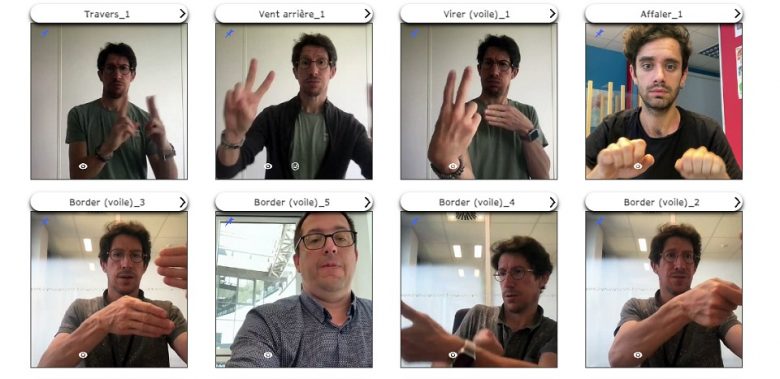
Examples from Signs@Work
This is a perfect example of the collaborative design approach adopted within the Employee Accessibility Innovation program. Designing a service and an interface does not just involve the two fixed phases of specification and then technical development. Since it is impossible to fully anticipate usability, usage must be considered throughout the design process. And only when end-users also contribute to the implementation of the service can we determine how usable the service actually is. Without practical usage, technological advances just remain as components for specialists.




